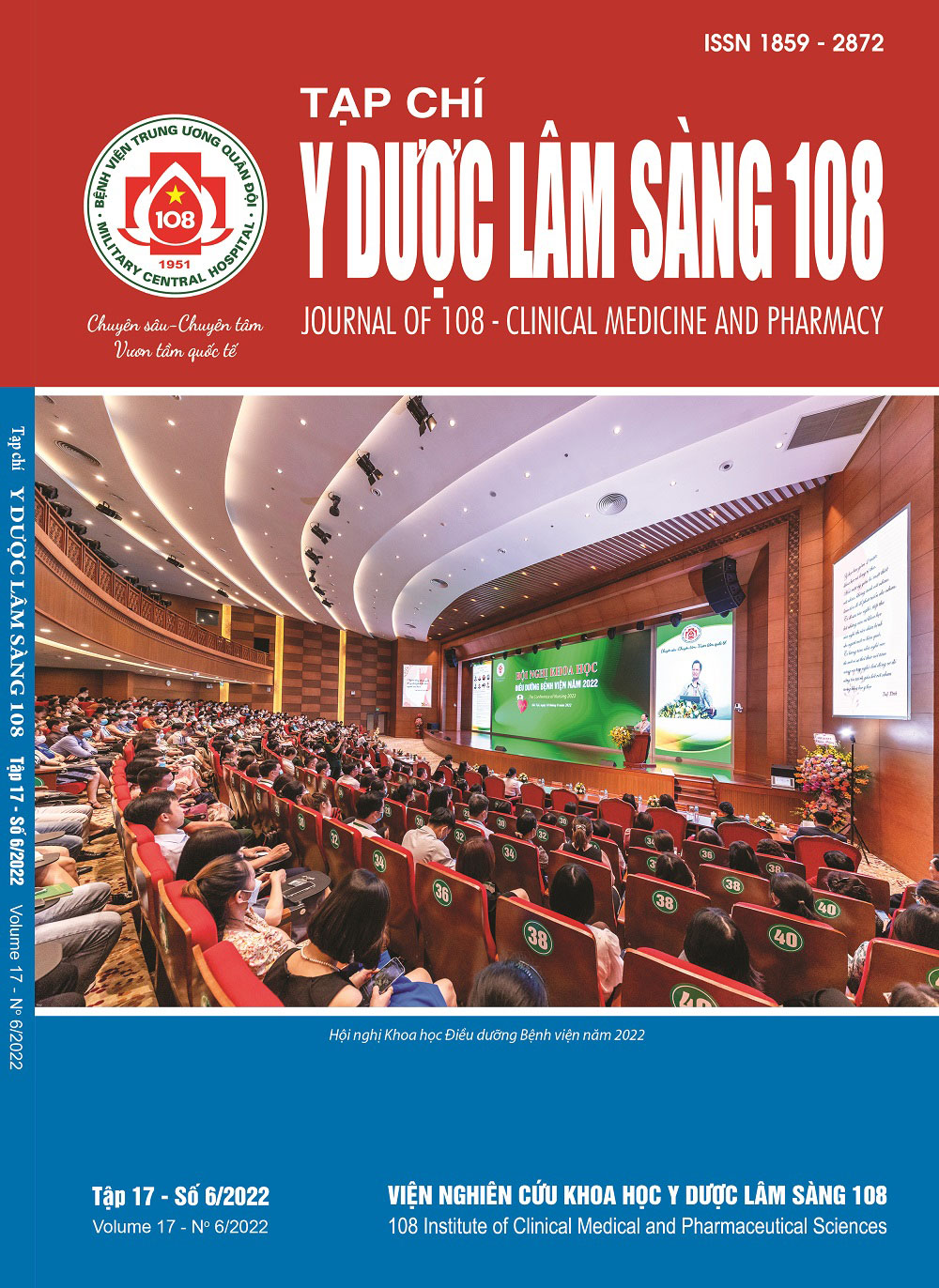Thái độ của điều dưỡng trong việc theo dõi các dấu hiệu sinh tồn tại các bệnh viện trong Hệ thống y tế Vinmec
Main Article Content
Keywords
Tóm tắt
Mục tiêu: Đánh giá thái độ của điều dưỡng trong theo dõi dấu hiệu sinh tồn tại các bệnh viện trong Hệ thống y tế Vinmec. Tìm hiểu một số yếu tố liên quan đến thái độ của điều dưỡng trong theo dõi dấu hiệu sinh tồn tại các bệnh viện trong Hệ thống y tế Vinmec. Đối tượng và phương pháp: Nghiên cứu mô tả cắt ngang sử dụng bộ câu hỏi tự điền V-Scale, được thực hiện từ tháng 12/2021 đến 05/2022 trên điều dưỡng viên đang làm việc tại các khoa điều trị nội trú trong các bệnh viện thuộc hệ thống y tế Vinmec. Kết quả: Có 327 điều dưỡng viên tham gia nghiên cứu, với: Độ tuổi dưới 30 tuổi (44%) và từ 31-45 tuổi (51,1%), đa phần là nữ giới (81,7%), có trình độ đại học (62,0%), và có thâm niên công tác trên 5 năm (78,5%). Điểm trung bình thái độ của điều dưỡng về theo dõi dấu hiệu sinh tồn là 55,9 ± 5,8. Tuổi và thâm niên công tác được xác định là hai yếu tố ảnh hưởng có ý nghĩa thống kê đến điểm đánh giá thái độ của điều dưỡng trong việc theo dõi dấu hiệu sinh tồn với giá trị p<0,05. Kết luận: Thực trạng thái độ của điều dưỡng đối với việc theo dõi dấu hiệu sinh tồn để phát hiện sớm diễn biến xấu của người bệnh ở mức tích cực khá thấp. Cùng với các quan niệm sai lầm về mức độ quan trọng của các dấu hiệu sinh tồn và việc không nhận ra những thiếu hụt kiến thức về dấu hiệu sinh tồn chỉ ra nhu cầu về tái đào tạo cho điều dưỡng về kiến thức liên quan đến dấu hiệu sinh tồn và nâng cao nhận thức về giá trị quan trọng trong việc theo dõi dấu hiệu sinh tồn.
Article Details
Các tài liệu tham khảo
2. Andersen LW, Kim WY, Chase M et al (2016) The prevalence and significance of abnormal vital signs prior to in-hospital cardiac arrest. Resuscitation 98: 112-117.
3. Chen J, Hillman K, Bellomo R et al (2009) The impact of introducing medical emergency team system on the documentations of vital signs. Resuscitation 80(1): 35-43.
4. De Meester K, Van Bogaert P, Clarke SP et al (2013) In-hospital mortality after serious adverse events on medical and surgical nursing units: A mixed methods study. J Clin Nurs 22(15-16): 2308-2317.
5. Fagan K, Sabel A, Mehler PS et al (2012) Vital sign abnormalities, rapid response, and adverse outcomes in hospitalized patients. Am J Med Qual Off J Am Coll Med Qual 27(6): 480-486.
6. Goldhill DR and McNarry AF (2004) Physiological abnormalities in early warning scores are related to mortality in adult inpatients. Br J Anaesth 92(6): 882-884.
7. Harrison GA, Jacques TC, Kilborn G et al (2005) The prevalence of recordings of the signs of critical conditions and emergency responses in hospital wards the SOCCER study. Resuscitation 65(2): 149-157.
8. Hodgetts TJ, Kenward G, Vlachonikolis IG et al (2002) The identification of risk factors for cardiac arrest and formulation of activation criteria to alert a medical emergency team. Resuscitation 54(2) 125-131.
9. Kellett J and Sebat F (2017) Make vital signs great again - A call for action. Eur J Intern Med 45: 13-19.
10. Leuvan CHV and Mitchell I (2008) Missed opportunities? An observational study of vital sign measurements. Crit Care Resusc J Australas Acad Crit Care Med 10(2): 111-115.
11. Mok W, Wang W, Cooper S et al (2015) Attitudes towards vital signs monitoring in the detection of clinical deterioration: Scale development and survey of ward nurses. Int J Qual Health Care J Int Soc Qual Health Care 27(3): 207-213.
12. Rose L and Clarke SP (2010) Vital signs. Am J Nurs 110(5): 11.
13. Sarı HY, Yöntem SÇ, Demir D et al (2012) 1879 Pediatric nurses knowledge and attitudes toward vital signs. Arch Dis Child 97(2): 530-530.
14. Sidani S, Guruge S, Miranda J et al (2010) Cultural adaptation and translation of measures: An integrated method. Res Nurs Health 33(2): 133-143.
15. Smith GB, Prytherch DR, Schmidt P et al (2006) Hospital-wide physiological surveillance-a new approach to the early identification and management of the sick patient. Resuscitation 71(1): 19-28.
 ISSN: 1859 - 2872
ISSN: 1859 - 2872
